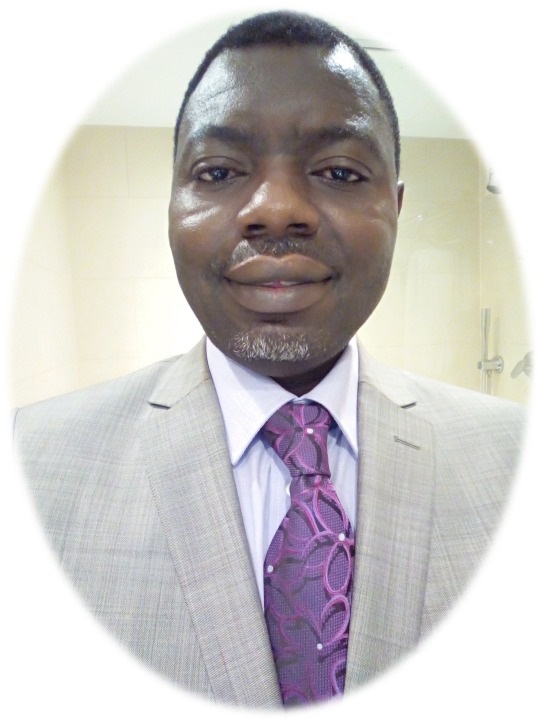Profil des anomalies non létales du tube neural à l’échographie anténatale à Abidjan
DOI:
https://doi.org/10.55715/jaim.v11i4.51Keywords:
Anomalie non létale, tube neural, échographieAbstract
Objectives: To describe the non-lethal neural tube defects discovered on prenatal ultrasound in Abidjan.Method: A six-year, multicentre, retrospective study was conducted in Abidjan, in the radiology departments of the Yopougon University Hospital and 2 private health centres. All obstetric ultrasound reports were reviewed and cases of non-lethal neural tube defects were identified. Sociodemographic data, types of malformations, their locations and associated signs were analysed.Results: We reviewed 6714 obstetrical ultrasound reports. The average age of the patients was 23.6 years with the 20 to 25 year age group predominating. Ultrasound examinations were performed in the 2nd quarter in 49% of cases and in the 3rd quarter in 41.3% of cases.The prevalence of neural tube defects was 1.1% or 110 cases per 10,000 pregnancies. The non-lethal forms seen in 44.8% of cases included, in decreasing order of frequency, hydrocephalus (43%), meningoceles (33%) and spina bifida (24%). A hydramnios was associated in 73.3% of cases.Conclusion: Non-lethal neural tube defects are dominated by hydrocephalus, encephaloceles and spina bifida. The ultrasound doctor must systematically look for them, in our context, in the event of the discovery of hydramnios or in the event of progressive maternal infection by rubella, syphilis or toxoplasmosis pathogens.
Résumé
Objectifs : décrire les anomalies non létales du tube neural, découvertes à l’échographie prénatale à Abidjan pour contribuer à l’amélioration de leur prise en charge diagnostique et thérapeutique.
Méthode : étude rétrospective, multicentrique, d’une durée de six ans qui s’est déroulée à Abidjan, dans les services de radiologie du centre hospitalier universitaire de Yopougon et de 2 centres privés de santé. Tous les comptes rendus d’échographie obstétricale ont été relus et les cas de malformations non létales du tube neural ont été recensés. Les données sociodémographiques, les types de malformations, leurs sièges et les signes associés ont été analysés.
Résultats : nous avons relu 6714 comptes rendus d’échographie obstétricale. L’âge moyen des patientes était de 23,6 ans avec prédominance de la tranche d’âge de 20 à 25 ans. Les échographies ont été réalisées au 2ème trimestre dans 49% des cas et au 3ème trimestre dans 41,3% des cas.
La prévalence des anomalies du tube neural était de 1,1% soit 110 cas pour 10 000 grossesses. Les formes non létales vues dans 44,8% des cas, comportaient par ordre de fréquence décroissante, les hydrocéphalies (43%), les méningo-encéphalocèles (33%) et les spina bifida (24%). Un hydramnios était associé dans 73,3 % des cas.
Conclusion : Les anomalies non létales du tube neural n’étaient pas rares dans notre contexte.Leur prévalence est demeurée constante, et elles étaient encoredominées par les hydrocéphalies. Le médecin échographiste devrait systématiquement les rechercher, devant un hydramnios ou en cas d’infection maternelle évolutive par les pathogènes de la rubéole, la syphilis ou la toxoplasmose.
Downloads
References
Institut National de la Statistique (INS) et ICF International. Rapport d’enquête Démographique et de Santé et à Indicateurs Multiples de Côte d’Ivoire 2011-2012. Calverton, Maryland, USA. P 8
Agha MM, Glazier RH, Moineddin R, Moore AM, Guttmann A. Food fortification and decline in the prevalence of neural tube defects: does public intervention reduce the socioeconomic gap in prevalence? Int J Environ Res Public Health. 2013 ;10(4) :1312-1323.
Rosano A, Smith D, Sumiyoshi Y et al. Time trends in neural tube defects prevalence in relation to preventive strategies: an international study. J Epidemiol Community Health. 1999 ; 53 (10) :630-5.
Owen TJ, Halliday JL, Stone CA. Neural tube defects in Victoria, Australia: potential contributing factors and public health implications. Aust NZ J Public Health. 2000 Déc ; 24(6) :584-9
Mirlesse V. Diagnostic prénatal et médecine fœtale : Du cadre des pratiques à l’anticipation du handicap. Comparaison France-Brésil. Thèse sociologie. Université Paris Sud-Paris XI, 2014. NNT : 2014PA11T043
Kouakou F, Anongba DS, N’guessan E, Nzouatom M, Kouamé A. Hydramnios : issue des grossesses et malformations fœtales : à propos de 50 observations colligées à la maternité du CHU de Treichville (Abidjan - Côte d’Ivoire) Med Afr Noire 2005 ; 52 (10) : 575-579
Faye-Kette E. Seroepidemiology of rubella among 461 pregnant women in Abidjan. Bull Soc Pathol Exot 86(3): 185-187
Dashe JS, McIntire DD, Ramus RM, Santos-Ramos R, Twickler DM. Hydramnios: anomaly prevalence and sonographic detection. Obstet Gynecol. 2002 Jul;100(1):134-9.
Botto LD, Lisi A, Robert-Gnansia E, Erickson JD, Vollset SE, Mastroiacovo P et al. International retrospective cohort study of neural tube defects in relation to folic acid recommendations: are the recommendations working? BMJ 2005; 330: 571.
Kouamé N, N’goan-Domoua AM, Nikiéma Z, Konan AN. Polyhydramnios: A warning sign in the prenatal ultrasound diagnosis of fetal malformation? Diagnostic and Interventional Imaging Volume 94, n° 4, p 433-437 (Avril 2013)
Damato N, Filly RA, Goldstein RB, Callen PW, Goldberg J, Golbuis M. Frequency of fetal anomalies in sonographycally detected polyhydramnios J Ultrasound Med 1993; 12: 11-15
Mahmood R, Brierley CH, Faed MJ, et al. Mechanisms of maternal aneuploidy: FISH analysis of oocytes and polar bodies in patients undergoing assisted conception. Hum Genet 2000 ; 106 : 620-6.
Sandalinas M, Marquez C, Munne S. Spectral karyotyping of fresh, non-inseminated oocytes. Mol Hum Reprod 2002 ; 8 : 580-5.
Martini E, Flaherty SP, Swann NJ, et al. FISH analysis of six chromosomes in unfertilized human oocytes after polar body removal. J Assist Reprod Genet 2000 ; 17 : 276-83.
Wall MB, Marks K, Smith TA, et al. Cytogenetic and fluorescent in situ hybridization chromosomal studies on in vitro fertilized and intracytoplasmic sperm injected failed-fertilized’ human oocytes. Hum Reprod 1996 ; 11 : 2230-8.
Pellestor F, Andréo B, Arnal F, et al. Maternal aging and chromosomal abnormalities: New data drawn from in vitro unfertilized human oocytes. Hum Genet 2003 ; 112 : 195-203.
Dhingani DD, Boruah DK, Dutta HK, Gogoi RK. Ultrasonography and magnetic resonance imaging evaluation of pediatric spinal anomalies. J Pediatr Neurosci. 2016 Jul-Sep ;11(3) :206-212.
Waldenstrom U, Axelsson O, Nilsson S, Lindeberg S, Eklund G, Sjodin Y. Effects of routine one-stage ultrasound screening in pregnancy a randomised controlled trial. Lancet 1988 ; 2 : 585-8.
Ministère de la santé et de l’hygiène publique de Côte d’Ivoire. Plan national de développement sanitaire 2016-2020, p29
Crane JP, LeFevre ML, Winbord RC, Evans JK, Ewigman BG, Bain RP, et al. A randomized trial of prenatal ultrasonographic screening: impact on the detection, management, and outcome of anomalousfetuses.Am J Obstet Gynecol 1994; 171: 392-9.
Us Preventive Services Task Force. Screening ultrasonography in pregnancy. In: Guide to clinical preventive services. Report of the US Preventive Services Task Force. 2nd. Baltimore: Williams and Wilkins; 1996. p. 407-17
De Vigan C, Goujard J, Vodovar V, Uzan S. Management of the fetus with a correctable malformation in Paris maternity units: evolution 1985-1994. Fetal Diagn Ther 1997 ;12 : 216-20.
Marcos JB Aguiar, Ângela S Campos, Regina A L P Aguiar, Ana M A Lana, Renata L Magalhães, Luciana T Babeto. Neural tube defects and associated factors in liveborn and stillborn infants. J Pediatr (Rio J) 2003 ;79(2) :129-34
Vendittelli F, Janky E. Suivi clinique et paraclinique d’une grossesse normale. J Gynecol Obstet Biol Reprod 2001 ; 30 : 51-8.
Lévi S, Schaaps JP, de Havay P, Coulon P, Defoort P. End-result of routine ultrasound screening for congenital anomalies: the Belgian Multicentric Study 1984-1992. Ultrasound Obstet Gynecol 1995 ;5 : 366-71.
Boog G. Dépistage des malformations fœtales. Performances de l'échographie. JEMU 1997 ; Suppl: 122-6.
Collège National des Gynécologues et Obstétriciens Français. Apport de l'échographie en obstétrique. Paris : Vigot; Tournaire M, Bréart G, Papiernik E éditeurs; 1987.
Lévi S, Hyjazi R, Schaaps JP, Defoort P, Coulon R, Buekens P. Sensitivity and specificity of routine antenatal screening for congenital anomalies by ultrasound:the Belgian Multicentric Study.Ultrasound Obstet Gynecol 1991; 1: 102-10.
Goujard J. Échographie obstétricale et dépistage des malformations congénitales. Le point de vue de l'épidémiologiste. JEMU 1997 ; Suppl: 127-31.
Bakketeig LS, Eik-Ness SH, Jacobsen G, Ulstein MK, Brodtkorb CJ, Balstad P, et al. Randomised controlled trial of ultrasonographic screening in pregnancy. Lancet 1984 ;2 : 207-11.
Ewigman BG, Crane JP, Frigoletto FD, LeFevre ML, Bain RP, McNellis D. Effect of prenatal ultrasound screening on perinatal outcome. The Radius Study Group. N Engl J Med 1993 ; 329: 821-7.
Downloads
Published
How to Cite
Issue
Section
License

This work is licensed under a Creative Commons Attribution-NonCommercial-ShareAlike 4.0 International License. Copyright @2017. This is an open-access article distributed under the terms of the Creative Commons Attribution-NonCommercial-ShareAlike 4.0 International License (http://creativecommons.org/licenses/by-nc-sa/4.0/) which permits unrestricted non-commercial used, distribution and reproduction in any medium






